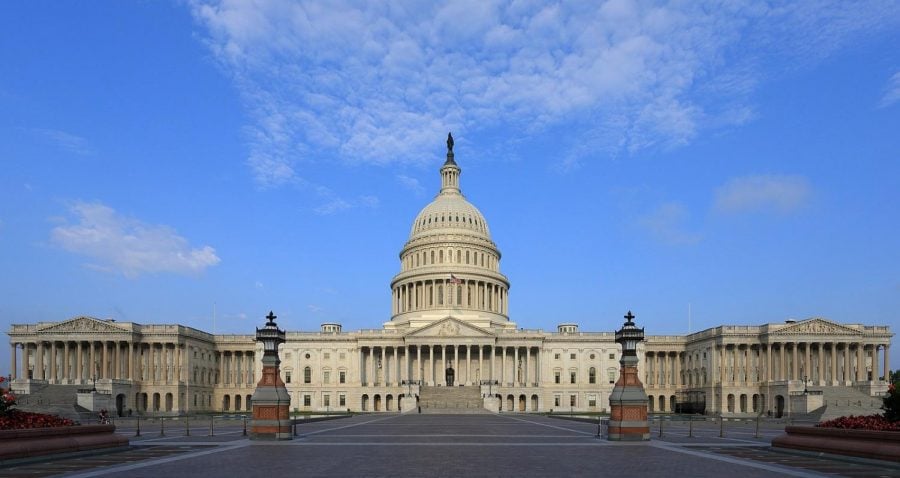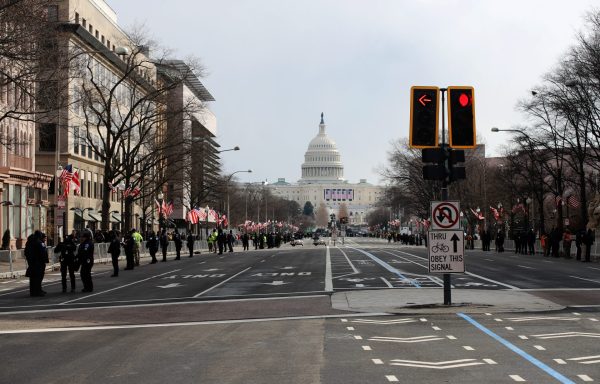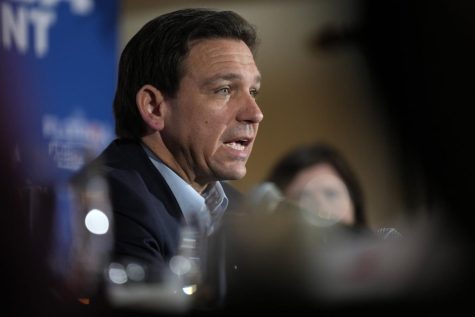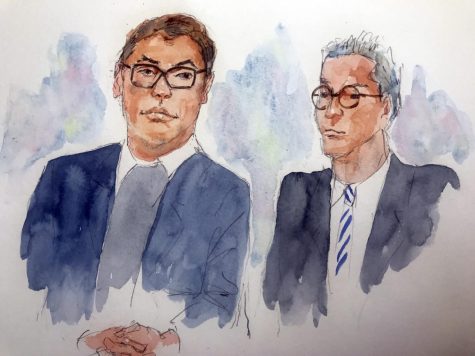Senate hearing evaluates progress of Nuclear Energy Innovation and Modernization Act
Wikimedia Commons for The DePaulia
On Jan. 15, the Senate Committee on Environment and Public Works held a hearing to discuss the one-year progress of the Nuclear Energy Innovation and Modernization Act
The act , signed into law by President Donald Trump on Jan. 14, 2019, seeks to regulate the Nuclear Regulatory Commission . The law demands “performance metrics and milestone schedules must be developed for activities requested by applicants and licensees. In addition, the NRC must implement processes to ensure accurate invoicing.” The law required the commission to develop a new licensing process for “commercial advanced nuclear reactors” and were given 270 days to implement these changes, according to the Jurist.
Under the law, the commission is required to have created a regulatory framework that is technologically-inclusive for “licensing commercial advanced nuclear reactors,” the Jurist said.
The meeting started off with an introduction of the topic led by U.S. Senator John Barrasso, the chairman of the committee. In his speech, he described Nuclear Energy as “clean, reliable and Carbon-Free”.
“It is cleaner, but ‘cleaner’ is also subjective,” said Tyler Barron, a policy fellow at the Environmental Law and Policy Center. “Our big bugaboo about nuclear [power] is the simple fact that there are certain products that are also cleaner that don’t come with the adherent risk and necessary cleanup and necessary overhead and oversight and necessary investment that nuclear comes with.”
Barron said the center is against the use of nuclear energy altogether.
“Why do we want to spend all of this money, all of this oversight, all of this regulatory necessities to invest in an energy that we could get from wind and solar without the extra baggage?” Barron said.
Mark Potosnak, an associate professor for environmental science and studies at DePaul University, said storing nuclear waste is a major concern of nuclear energy production.
“First, some of the smaller atoms are radioactive and therefore very dangerous to human and animal health and long-term safe disposal is very difficult,” Potosnak said. “Second, once started, the reaction of splitting atoms is self-sustaining, somewhat like lighting a fire. Unfortunately, the ‘fire’ of the reaction can run out of control, causing meltdowns, explosions and spreading of radioactive material.”
After an opening statement from Sen. Tom Carper, D-Del., the mic was handed off to the two witness of the hearing, Margaret Doane, the executive director of operations at the Nuclear Regulatory Commission, and Ben Ficks Jr., the deputy chief financial officer of the commission.
“Over the past year, the NRC staff has successfully implemented NEIMA’s requirements and met all of NEIMA’s deadlines,” Doane said.
This included actions such as implementing “risk-informed and performance-based techniques and guidance for the resolution of numerous policy issues regarding new reactors,” and creating a “draft regulatory guide technology-inclusive, risk-informed, performance-based licensing approach for advanced reactor licensing.”
Ficks touched on the fiscal side of the act. He highlighted the improvements the commission has made in the past year including adding new data elements to their energy systems and implementing a new billing systems that allow them to be more transparent in their money spending.
This act was created with the intent of increasing the use of nuclear power across the country. Potosnak said Chicago is already a hub for nuclear energy.
“We currently have a large nuclear industry in Chicago. Much more of our electricity comes from nuclear compared to other parts of the country,” Potosnak said.
With an increase of nuclear power plants, Chicago could be at risk of new nuclear power plants in the area.
“My concern with the increase of nuclear power plants would be any nuclear malfunctions,” said DePaul junior Patrick Mont.
Barron believes this nuclear energy is still a step in the right direction despite shortcomings.
“Any investment in clean energy that produces a significant return on investment will spur more production of clean energy,” Barron said.







